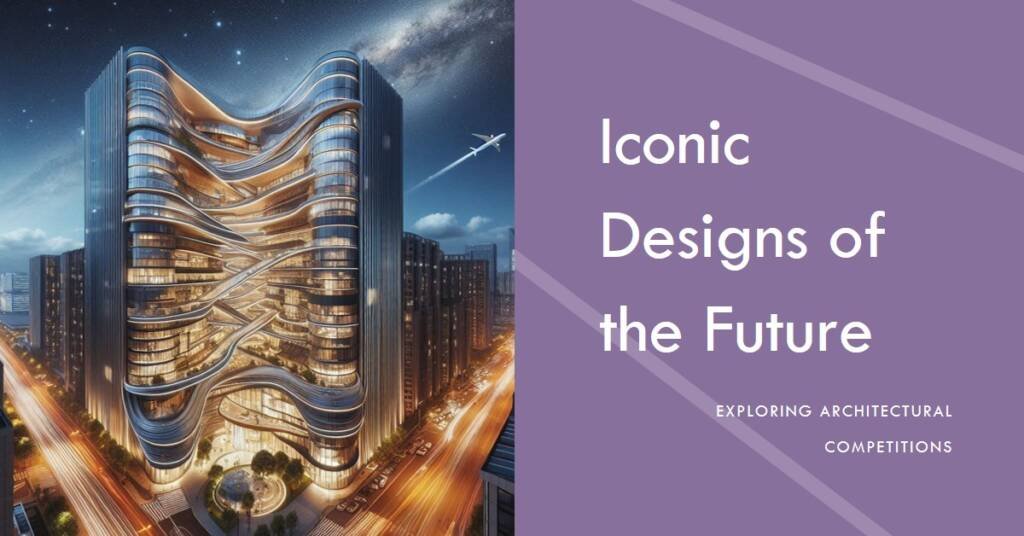
Table of Contents
- Introduction to Architectural Competitions
- The Historical Context of Architectural Competitions
- Notable Architectural Competitions: A Closer Look
- Judging Criteria and Process in Architectural Competitions
- Innovative Designs That Emerged from Competitions
- Impact of Architectural Competitions on Urban Development
- The Role of Technology in Modern Architectural Competitions
- Future Trends in Architectural Competitions
- Conclusion: Celebrating Innovation through Competition
Introduction to Architectural Competitions
Architectural competitions serve as a fundamental platform within the architectural landscape, presenting opportunities for architects, designers, and urban planners to showcase their creativity and innovation. These competitions can take many forms, ranging from open calls inviting international submissions to invited competitions limited to a select number of firms. Each competition typically has a specific purpose or goal, often related to public spaces, cultural institutions, or urban redevelopment initiatives. By setting particular parameters and guidelines, these competitions encourage participants to explore unconventional approaches and propose visionary designs that may challenge existing paradigms.
The importance of architectural competitions extends beyond mere design proposals; they catalyze innovation and foster a spirit of experimentation within the field. By encouraging architects to think outside the box, competitions can lead to pioneering solutions addressing contemporary challenges such as sustainability, urban density, and social equity. As architects engage in these competitive processes, they not only refine their skills but also contribute to a broader dialogue about the built environment and its impact on society. Innovations borne out of these competitions can have a ripple effect, influencing architectural practices and standards worldwide.
Moreover, architectural competitions reflect a commitment to progress in the field, demonstrating how collaboration and exchange of ideas can inspire transformative designs. Many iconic structures worldwide have emerged from competitions, highlighting the critical role these contests play in shaping the future of architecture. They serve as a crucible for creativity where new ideas are tested and the boundaries of architectural thought are continually expanded. This introduction sets the stage for examining specific case studies of notable architectural competitions, each exemplifying the dynamic interplay between design, vision, and societal needs.
The Historical Context of Architectural Competitions
Architectural competitions have a rich history, tracing their origins back to ancient civilizations where grand monuments were designed to demonstrate artistic and engineering prowess. In ancient Greece, for example, competitions held during festivals like the Panhellenic Games showcased new building projects, thereby pushing architects to innovate and elevate their practices. Over time, this practice evolved into more structured competitions, often aimed at finding the best designs for significant public buildings and other landmark structures.
The Renaissance period marked a significant turning point in the world of architectural competitions. Artists and architects were invited to propose designs for major constructions, such as cathedrals or palaces, offering a formal platform to showcase their skills. Noteworthy examples include the competition for the dome of St. Peter’s Basilica in the early 16th century, which invited renowned architects like Michelangelo to present their visions. Such high-profile competitions not only set standards but also illuminated the architectural style and design ethos of the era.
In the 19th century, architectural competitions gained traction in Europe and America, with institutions and municipalities organizing them to promote civic engagement in urban planning. The Crystal Palace competition in 1850 exemplified how public exhibitions inspired modern architecture and showcased innovative materials and technologies. Similarly, the Chicago World’s Fair in 1893 introduced a more competitive spirit, encouraging architects to conceptualize grand, visionary designs that could define a city for generations. These early competitions established precedents for the collaborative and inventive nature of architecture, reinforcing the importance of diverse perspectives in shaping the built environment.
Through these historical shifts, architectural competitions have become a vital aspect of the profession, encouraging creativity, fostering innovation, and setting benchmarks that have profoundly influenced design standards and practices over the centuries.
Notable Architectural Competitions: A Closer Look
Architectural competitions have played a crucial role in shaping the built environment, inspiring innovative designs and fostering new ideas in architecture. One of the most significant competitions in history is the Chicago World’s Fair of 1893, which aimed to showcase the advancements of the United States. Architects such as Daniel Burnham and Louis Sullivan were pivotal in this event, which introduced the world to the neoclassical design and monumental buildings. The iconic Ferris Wheel also made its debut at this fair, symbolizing progress and modernity.
Another landmark competition was the Guggenheim Museum competition held in 1943. It sought visionary designs for a museum that would reflect modern art. Frank Lloyd Wright emerged as the winner with his distinctive, spiraling form that breaks from traditional architectural styles. The design was not only revolutionary in aesthetics but also in function, as it was intended to accommodate art in a new and engaging manner, allowing visitors to experience it in an immersive way. The Guggenheim Museum remains an integral part of New York’s architectural landscape.
The Sydney Opera House competition in 1956 is also noteworthy. It aimed to find a design for a performing arts venue that would harmonize with its harbor setting. Danish architect Jørn Utzon’s innovative design, characterized by its sail-like shells, won despite initial skepticism regarding its feasibility. The opera house has since become an emblem of Sydney and a UNESCO World Heritage site, recognized for its stunning architectural and engineering achievements. These competitions not only challenged architects to push the boundaries of creativity but also significantly influenced the cultural identity of their respective cities.
Judging Criteria and Process in Architectural Competitions
Architectural competitions play a pivotal role in shaping innovative designs and fostering creativity within the built environment. The judging process in these competitions is crucial, as it ensures that entries are evaluated fairly and transparently. Typically, juries composed of distinguished architects, designers, and industry experts oversee this evaluation process. The criteria used for assessing the submissions can vary, yet common factors include originality, feasibility, contextual fit, and aesthetic value.
The importance of transparency in the judging process cannot be understated. Clear guidelines help participants understand what the jurors are looking for, which promotes equitable competition. An open call for submissions often accompanies the competition brief, allowing architects from diverse backgrounds to showcase their ideas. Once the submissions are in place, the jurors usually engage in a thorough review process, often involving multiple stages of evaluation. Initial shortlisting may focus on conceptual clarity and innovation, while subsequent rounds delve deeper into technical and practical aspects of the designs.
Different models can define the judging process. Some competitions utilize a single round of judging, while others employ several phases that may include public voting or peer review. Additionally, juries might employ scoring systems that quantify qualitative assessments, offering a codified way to rank entries objectively. Insights from past jurors reveal that they often look for a balance between creativity and constructibility, as well as how a design interacts with its environment.
Ultimately, the success of an architectural competition rests heavily on the judiciousness of its judging process. Adherence to established criteria not only promotes fairness but also encourages the production of exceptional designs that contribute meaningfully to architectural discourse. Through continuous refinement of these processes, the architectural community can ensure that the outcomes of these competitions foster innovation and advancement in the field.
Innovative Designs That Emerged from Competitions
Architectural competitions have long been a catalyst for groundbreaking designs that redefine the landscape of modern architecture. These contests encourage architects to push creative boundaries and explore innovative solutions to contemporary challenges. Among the plethora of submissions, certain designs stand out due to their originality, functional adaptation, and forward-thinking use of materials. One notable example is the Centre Pompidou in Paris, designed by Renzo Piano and Richard Rogers. This structure showcases an unconventional approach by exposing its mechanical systems, challenging the conventional ideas of space and structure.
Competitions also serve as a platform for introducing new materials and techniques. For instance, the use of advanced glass technology in the design of the Apple Park in Cupertino, California, exemplified a shift towards sustainability and environmental consciousness within architectural practices. This circular building not only offers a visually stunning corporate headquarters but also incorporates natural ventilation and renewable energy resources, addressing the pressing environmental challenges of our time.
Furthermore, the influence of competition designs extends beyond individual projects. The Reykjavik Harpa concert hall in Iceland, a product of a competition won by studio Olafur Eliasson, illustrates how architectural competitions can create iconic landmarks that embed cultural identity within their framework. Its unique faceted glass facade, which reflects the natural light and landscape surrounding it, has transformed the city and drawn tourists, thereby influencing urban regeneration in thriving cities.
These innovative designs, born from competitive scenarios, do not simply exist as standalone statements; they provoke discussions about functionality, identity, and sustainability. The interplay of visionary thinking within architectural competitions has undoubtedly influenced future architectural practices, inspiring architects globally to explore uncharted territories and reconsider the role of architecture in society.
Impact of Architectural Competitions on Urban Development
Architectural competitions have long served as a catalyst for innovative design solutions, profoundly influencing urban development. These competitions not only generate creative architectural concepts but also offer a platform for addressing pressing societal needs. Winning designs have the potential to reshape city skylines, marking a transition from traditional urban landscapes to modern, functional spaces that reflect the values and aspirations of contemporary society.
One notable case study is the High Line in New York City, a transformed elevated railway that has become an iconic public park. This project emerged from a design competition aimed at revitalizing an underutilized space. The High Line has not only enhanced the aesthetic appeal of the surrounding area but has also stimulated economic activity. This transformation illustrates how well-conceived architectural competitions can assist in creating public spaces that foster community interaction, contribute to neighborhood revitalization, and promote local businesses.
The impact of architectural competitions extends beyond just aesthetic enhancements; they also play a significant role in urban planning by encouraging sustainable practices. Many recent competitions prioritize environmental sustainability, pushing architects to propose designs that reduce carbon footprints and improve urban ecosystems. For instance, the design competition for the Chicago Riverwalk led to a vibrant multipurpose space that incorporates green infrastructure, thereby improving the city’s resilience to climate change while providing recreational opportunities for residents.
By promoting novel ideas that are aligned with contemporary urban needs, architectural competitions create frameworks that challenge architects to think beyond mere structures. They encourage designs that prioritize community, sustainability, and long-term viability in urban development. As these competitions continue to evolve, their impact on shaping city environments grows more pronounced, paving the way for future generations of architects to create even more innovative solutions for urban living.
The Role of Technology in Modern Architectural Competitions
In recent years, technology has emerged as a transformative force in the realm of architectural competitions, significantly altering the way designs are conceived, presented, and evaluated. The integration of advanced digital tools has not only streamlined the submission and judging processes but has also elevated the level of creativity and audience engagement. Among the most impactful innovations are 3D modeling, virtual reality (VR), and online voting systems.
3D modeling software has revolutionized the design process by allowing architects to create intricate and realistic representations of their visions. This technology facilitates the exploration of various design options, enabling participants to visualize and iterate their concepts with unprecedented precision. As a result, architects are able to convey their ideas more effectively, leading to more informed decisions by judges and stakeholders alike.
Moreover, VR has transformed the manner in which architectural concepts are experienced. By providing immersive environments, this technology allows both judges and the public to engage with the designs on a personal level, fostering a deeper understanding of the proposed spaces. The ability to walk through virtual models not only enhances the evaluation process but also expands the reach of competitions, as designs can be experienced by a wider audience regardless of geographic boundaries.
Online voting systems represent another major advancement, facilitating quicker, more transparent decision-making. These platforms enable stakeholders, including the general public, to participate in the evaluation process, thus democratizing architectural competitions. The incorporation of crowd-sourced feedback can lead to a diverse array of opinions, fostering collaboration between architects and communities and enhancing the relevance of the designs proposed.
In conclusion, technology has played a pivotal role in reshaping architectural competitions, enhancing creativity, collaboration, and audience engagement. By harnessing the power of digital tools, architects are empowered to create innovative designs that resonate with broader audiences, ultimately shaping the future of architectural practice.
Future Trends in Architectural Competitions
As the field of architecture continues to evolve, so too does the landscape of architectural competitions. Emerging trends reflect a growing emphasis on sustainability, social equity, and resilience, shaping the frameworks through which these competitions are conducted. The rising awareness of climate change and environmental degradation has prompted many organizations to prioritize sustainability in design. Competitions are increasingly calling for innovative approaches that utilize eco-friendly materials, promote energy efficiency, and encourage biodiversity in urban settings. This focus on sustainable architecture highlights the importance of harmonizing built environments with natural ecosystems, aiming for designs that not only meet aesthetic standards but also contribute positively to the environment.
Moreover, social equity has surfaced as a critical theme within architectural competitions. The need for spaces that cater to diverse communities and reflect cultural inclusivity is gaining prominence. Future competitions may incorporate criteria assessing how well designs address social issues, such as affordable housing and public accessibility. By emphasizing inclusive design, competitions can foster a new generation of architects who prioritize the needs of all community members, ultimately leading to more equitable urban development.
Resilience is another pivotal trend set to influence architectural competitions. As cities are increasingly confronted with the impacts of climate-related events, designs that feature adaptive strategies for various scenarios are becoming essential. Future competitions might necessitate that participants integrate resilience planning into their proposals, addressing factors like natural disasters and socio-economic shifts. This shift underscores the importance of foresight in architecture, promoting the creation of structures that not only withstand challenges but also enhance community well-being.
Insights from thought leaders and emerging architects indicate that the architectural competition landscape will continue to adapt, reflecting societal values and environmental imperatives. By embracing sustainability, social equity, and resilience, competitions can navigate the complexities of modern design challenges, ultimately shaping a more thoughtful and responsive architectural future.


Conclusion: Celebrating Innovation through Competition
Throughout this exploration of iconic architectural competitions, we have witnessed how they serve as crucibles for innovation and creativity, prompting architects to push the boundaries of design and functionality. The competitive atmosphere encourages participants to propose visionary concepts that not only address the immediate needs of society but also respond to broader issues such as sustainability, urbanization, and cultural heritage. By spotlighting exceptional designs, these contests have profoundly influenced the built environment and have often led to significant advancements within architectural practice.
As discussed, architectural competitions have established a platform where visionary ideas can gain exposure, allowing architects the freedom to explore and experiment without the constraints that typical projects may impose. This dynamic fosters an environment conducive to groundbreaking solutions, often paving the way for future architectural trends. Many renowned structures that have become landmarks started as entries in these competitions, indicating their vital role in shaping contemporary urban landscapes.
Moreover, the legacy of these competitions extends beyond mere design; they embody a collective aspiration for continuous improvement and innovation in architecture. As architects and designers engage in these competitions, they not only hone their skills but also collaborate with others, exchanging ideas and perspectives that enrich the discipline as a whole. Such collaborative efforts reinforce the notion that architecture is an evolving field, responsive to the challenges and aspirations of societies across the globe.
In summation, architectural competitions are more than just events; they are vital catalysts for progress. They encourage the exploration of new ideas, promote collective creativity, and ultimately play a crucial role in shaping the future of our built environment. By celebrating this spirit of competition and innovation, we acknowledge the transformative impact of these events, inspiring both current and future generations of architects to envision and create a better world.



